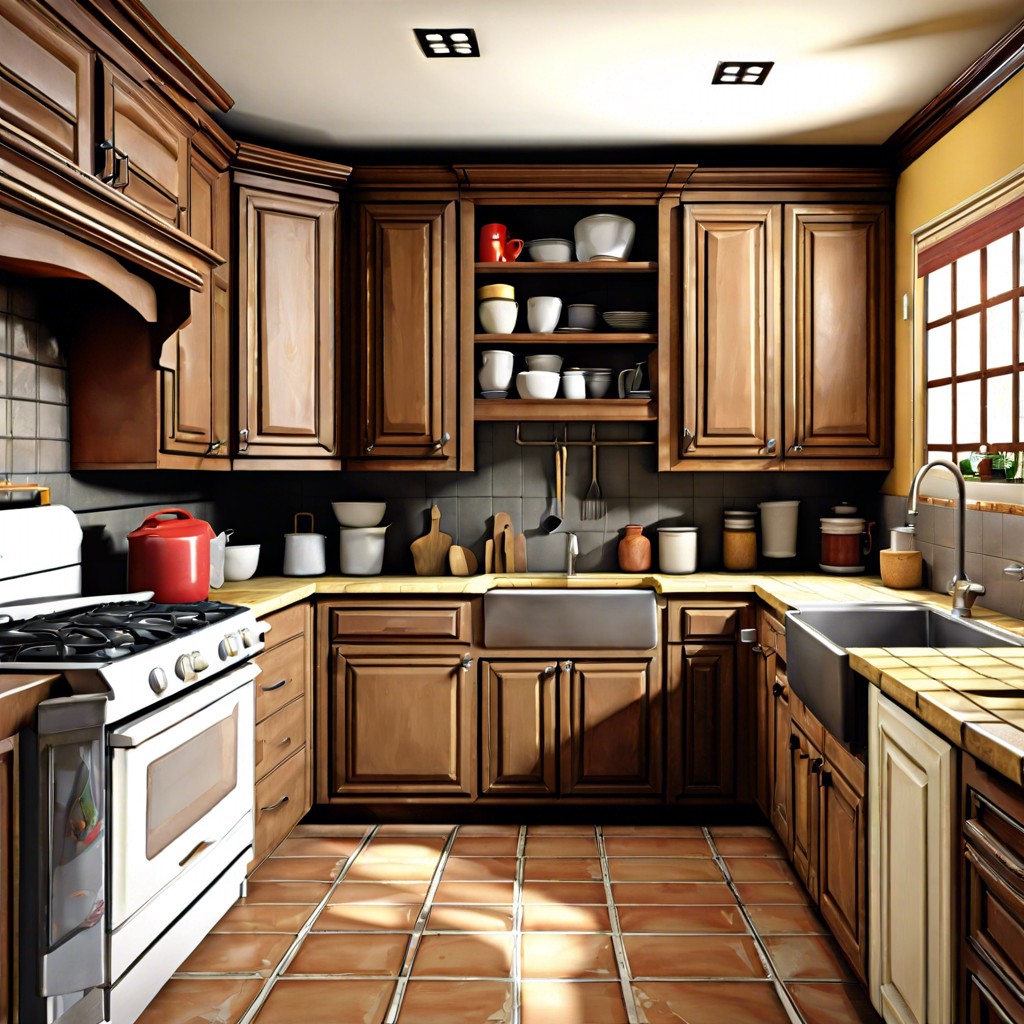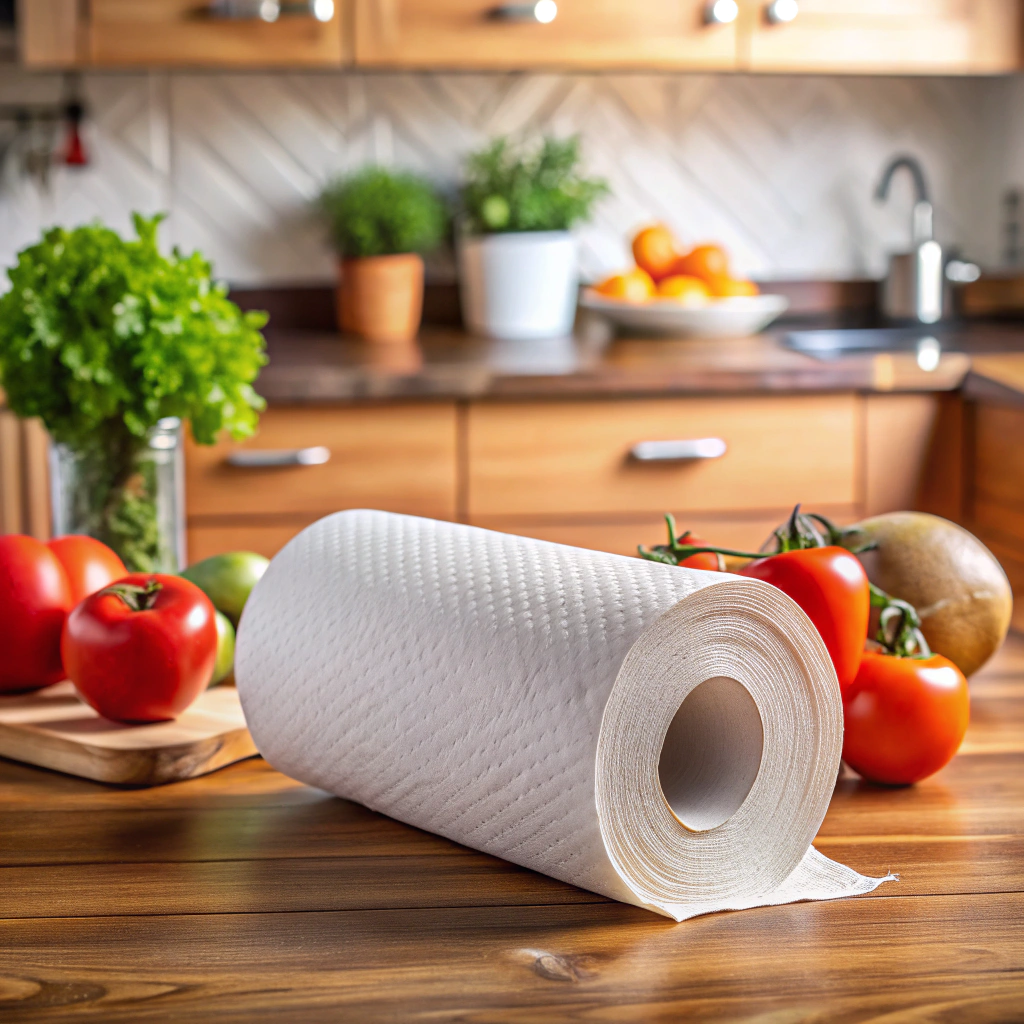Last updated on
Learn effective methods to clean greasy kitchen cabinets and make them sparkle without breaking a sweat.
Key takeaways:
- Use gentle dish soap and warm water for laminate or painted cabinets.
- Vinegar and water work well for wood cabinets.
- Microfiber cloths and water are best for stainless steel cabinets.
- Dish soap and water are sufficient for thermofoil cabinets.
- Clean cabinets every one to two weeks for daily cooks.
What's Inside
Before Getting Started

Alright, let’s get prepped and ready! First, get in the right mindset. Cleaning greasy cabinets doesn’t have to be a chore if you tackle it with a little bit of strategy. Clear your schedule and maybe put on your favorite playlist. A dance party with your cabinets is optional but recommended.
Remove everything from the cabinets. This is your chance to discover those hidden snack stashes.
Prep the area around. Lay down some old towels or newspaper to catch any drips. You don’t want your sparkling clean floor to end up greasy.
Gather your cleaning supplies. This should include a bucket, scrub brushes, sponges, microfiber cloths, and your chosen cleaning solutions which we’ll discuss in a bit.
Put on some gloves. Protect those hands! You’ll thank yourself later when you can still feel your fingers after scrubbing.
Choose the Right Cleaning Method for Your Cabinet Type
For laminate or painted cabinets, a mild dish soap and warm water mix works wonders. Avoid abrasive sponges that could scuff the finish.
Wood cabinets need a gentler touch. Think vinegar and water—nature’s original dynamic duo. Just don’t overdo it on the vinegar; it can be too harsh if used undiluted. For particularly grimy spots, a tiny bit of baking soda can add the oomph you need.
Stainless steel cabinets? Microfiber cloths and water are your best friends. Special stainless steel cleaners can help with tougher grease, but always wipe in the direction of the grain to avoid streaks.
Lastly, for those with thermofoil cabinets, a mix of dish soap and water will suffice. Avoid heat near these cabinets, it can cause the foil to peel. Simple, right?
What You’ll Need
First things first, gather your materials. You don’t want to be midway through scrubbing to realize you forgot something. Here’s the lineup:
A gentle grease-cutting dish soap. Go easy on the harsh chemicals; your cabinets will thank you.
A bucket of warm water. This will be your sweet, warm scrubbing partner.
A microfiber cloth. Perfect for scrubbing without scratching. They’re the softies of the cleaning world.
A soft-bristle brush or an old toothbrush. For those stubborn, hard-to-reach spots. Think of it as dental hygiene for your kitchen!
A spray bottle. Handy for misting on the magic cleaning solution.
A dry towel. Because nobody likes drippy, soggy cabinets.
A mixing bowl. For your homemade cleaning brew, if that’s your jam.
Now you’re fully armed to declare war on grease and grime lurking on your kitchen cabinets.
How to Degrease Kitchen Cabinets
So, you’ve got your cleaning supplies, and you’re ready to tackle those greasy cabinets. Here’s how to do it effectively:
Start at the top. Gravity is your friend here; any drips will fall down and not mess up an already cleaned area.
Spray the degreaser or your homemade solution directly onto the greasy surface. Let it sit for a few minutes. Patience, my friend, patience.
Use a soft, damp cloth or sponge to gently scrub the grease away. Circular motions work best. It’s like giving your cabinets a mini massage.
For stubborn spots, a bit of baking soda on a damp sponge can work wonders. Think of it as the elbow grease without the actual elbow grease.
Rinse the cloth or sponge and wipe down the cabinets to remove any remaining cleaner. You don’t want those surfaces to become sticky.
Dry the cabinets with a clean, soft towel. Moisture is not your cabinets’ best friend.
Repeat these steps until all that grime is history. It’s like a makeover show, but for your kitchen.
Choose the Right Kitchen Degreaser
When it comes to picking a degreaser, it’s all about matching the product to the grime. Not all degreasers are created equal. Here are some friendly pointers:
Check the label! Some greasers are hardcore and can damage your cabinets’ finish. Look for something gentle if possible.
Natural, homemade options like vinegar and baking soda are great for light grease. Plus, they won’t leave your kitchen smelling like a chemical plant.
For stubborn grime, commercial degreasers might be necessary. Just make sure they’re safe for wood, laminate, or whatever material your cabinets are made of.
Citrus-based cleaners are a sweet compromise. They smell great, cut through grease effectively, and are usually pretty safe for most surfaces.
Always patch test! Before going wild, test your chosen cleaner on a small, hidden area.
By considering these points, you’ll keep your kitchen looking fab without any unintended damage. Happy cleaning!
When to Clean Your Kitchen Cabinets
Grease builds up stealthily, like a ninja in the night. How often you clean your cabinets depends on your cooking habits.
Daily cooks, especially fans of frying, should give their cabinets a quick wipe-down every one to two weeks. Steam and oil from sauteing create a perfect storm for sticky residue.
For those with a more hands-off approach to cooking, a monthly clean should keep things looking fresh. Even if you only microwave, grease particles are still airborne.
After a big feast or cooking marathon, it’s like a workout for your kitchen. Give your cabinets some TLC afterwards.
Special occasions, like spring cleaning, are perfect times for a thorough wash, scrubbing away months of accumulated grime.
Consider the color and material of your cabinets. Light-colored or glass-front cabinets show grime faster than dark or wood grain finishes.




